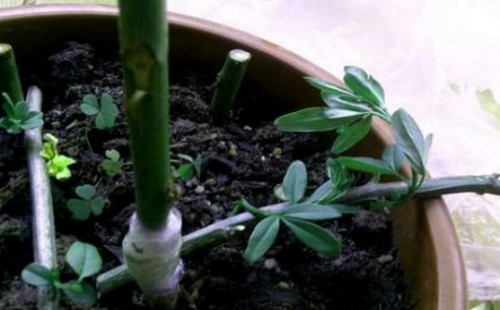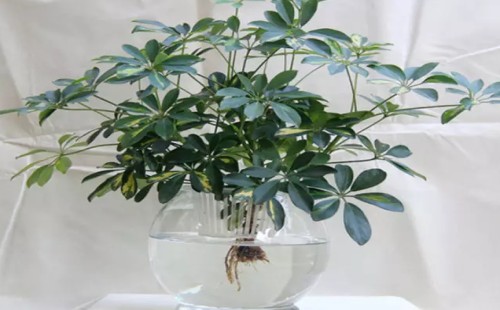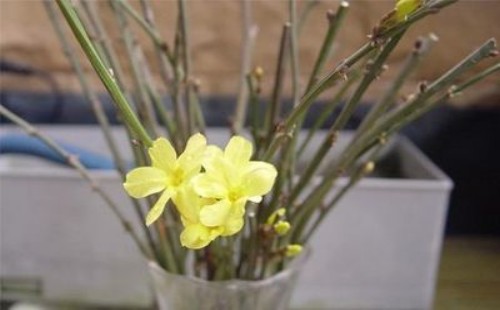Can primroses be cut? how to cut?
When it comes to the spring season, it is said that spring is the season for sowing, so can primroses reproduce in spring? The answer is yes. And many potted flowers and plants can breed young plants by cutting, so can primrose be cut? Generally speaking, primrose is more suitable to use cutting to achieve the purpose of breeding young plants.

The cutting of primrose can use hardwood cuttings, tender wood cuttings, and even water cuttings to breed young plants. Today, the editor mainly introduces the method of soil insertion. In the following chapter, the editor will tell you how to use water insertion to reproduce young plants.
1. Cutting time
The cutting of primrose is usually carried out in March in spring, but it is necessary to choose more than one-year-old hard branches as cuttings; for those branches that are not completely Lignified and relatively soft, it is usually more suitable to be cut in April; while the new branches of the current year are often more suitable for cutting in summer. Therefore, the cutting time of primrose often depends on the growth period and hardness of the branches.
Second, select cuttings
Through the above editor told you, we first cut strong branches as cuttings, whether it is the current year or more than one-year-old branches, can be cut, but the choice of branches determines the time of cutting. Therefore, we can choose an appropriate time, and then cut the corresponding hardness of the branches to make cuttings. But the cuttings should be between 8 and 12 centimeters, and the branches can keep 2 leaves, which can reduce water evaporation.
Third, make the slotting machine
The adventitious roots often sprout under the branches of primrose, so it is easier to survive by using the method of cutting, but it needs to be carried out in strict accordance with the requirements when preparing cutting soil, otherwise it may cause cutting failure. If it is convenient, it is recommended that you use a mixture of clean river sand and humus to make a slotting bed. This kind of soil is relatively soft, breathable and permeable, and the fertility is also good, so the cutting effect must be better.
IV. Cutting process
Insert the prepared cuttings into the cutter, and then put the cutter in a cool and ventilated place for management. During this period, appropriate water is needed to keep the basin soil moist and promote cuttings to take root. after the cuttings have successfully rooted and grown stably, they can be planted in the flowerpot. After the basin returns to normal growth, we will increase the light appropriately and restore normal maintenance and management at the same time.
The above is the method of primrose cutting, but in order to ensure the smooth survival of cutting, we need to do a good job in the management of the following links.
1. Cuttings
First of all, we need to choose robust disease and insect pest-free branches as cuttings, if they are twigs, they should be cut in time so as not to affect survival due to too much water loss. However, whether old or tender branches are used as cuttings, the cut should be sterilized and disinfected before cutting, usually smeared with plant ash, which can prevent the invasion of diseases and insects and prevent decay at the same time.
2. Temperature
Temperature is also an important factor affecting the survival of cuttings, usually keeping the ambient temperature between 20-25 ℃, cuttings are easier to root and the survival rate is higher. If the temperature is too low, the rooting of the cuttings is relatively slow, and the temperature is too high, it is easy to cause the scissors on the cuttings to rot. Therefore, the appropriate temperature is an important guarantee for the success of cutting.
3. Humidity
When cutting, it is necessary to ensure that the substrate has appropriate humidity. If the humidity of the cutter is too low, the cuttings will not survive normally due to lack of water; if the humidity of the cutter is too high, it is easy to cause decay and lead to cutting failure. Therefore, the appropriate humidity environment plays an important role in whether the cuttings can survive. If necessary, the cuttings can be covered with a layer of plastic film, which can play a moisturizing effect. But also often open the plastic film to exchange air, otherwise it will also affect the survival of cuttings.
Time: 2019-06-07 Click:
- Prev

Hydroponic culture technique of duck foot wood
Duck palm wood can not only soil basin, but also can be hydroponic, and as long as the scientific use of planting and breeding technology, it can also make it grow well, quite ornamental. The hydroponic culture of duck palm wood can usually be converted to hydroponic culture through water insertion and soil culture, but the most commonly used is the use of branch hydroponics and hydroponics. Below
- Next

The cutting Propagation method of Primrose-- Water cutting method
In the last article pushed by the editor, the editor introduced the time and method of primrose cutting, but it is a way to propagate young plants in soil. Today, the editor will introduce another way of cutting propagation, water cutting. So, how to put primroses in water? Below
Related
- Fuxing push coffee new agricultural production and marketing class: lack of small-scale processing plants
- Jujube rice field leisure farm deep ploughing Yilan for five years to create a space for organic food and play
- Nongyu Farm-A trial of organic papaya for brave women with advanced technology
- Four points for attention in the prevention and control of diseases and insect pests of edible fungi
- How to add nutrient solution to Edible Fungi
- Is there any good way to control edible fungus mites?
- Open Inoculation Technology of Edible Fungi
- Is there any clever way to use fertilizer for edible fungus in winter?
- What agents are used to kill the pathogens of edible fungi in the mushroom shed?
- Rapid drying of Edible Fungi

